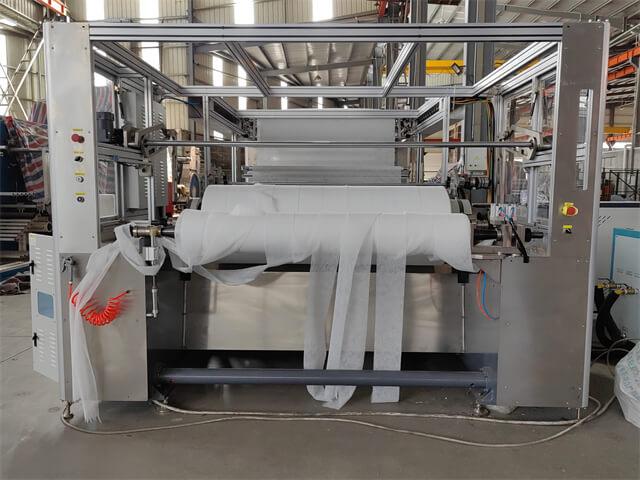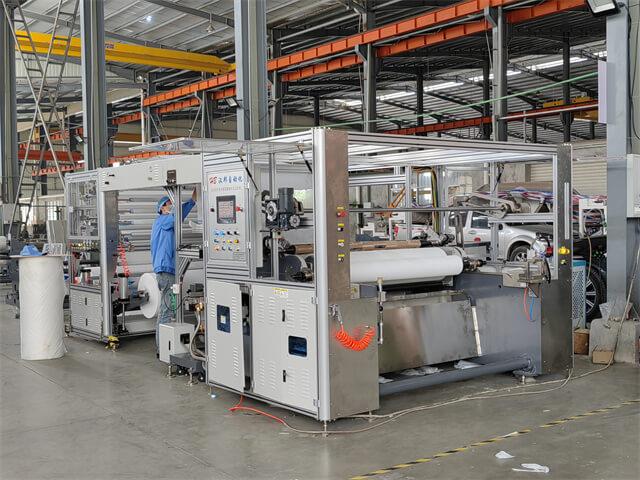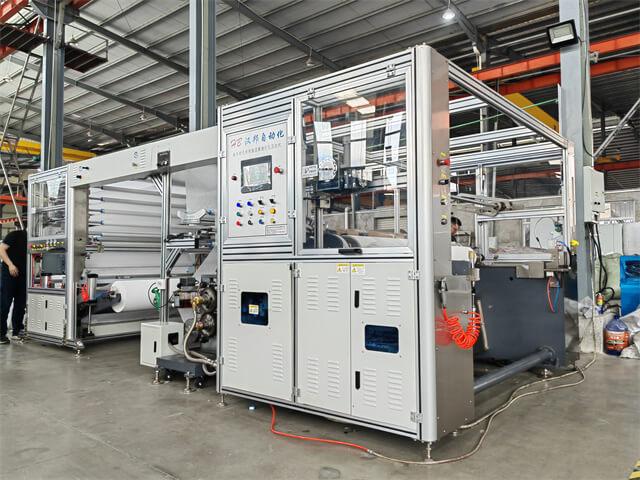Author:HB Nonwoven MachineryFROM:Compressed Towel Machine Manufacturer TIME:2024-04-30
Operating a Non Woven Fabric Perforating Machine
The non-woven fabric Perforating machine is a crucial piece of equipment in the hygiene products industry. It plays a vital role in the production process of items like diapers and sanitary napkins. This machine is designed to perforted holes in the non-woven fabric, allowing for better fluid absorption and overall comfort. In this article, we will explore the different aspects of operating a non-woven fabric Perforating machine, including its functions, operation process, maintenance, and benefits.
The non-woven fabric Perforating machine is primarily used to create small perforations, or holes, in the fabric. These holes serve multiple purposes in hygiene products. Firstly, they enhance the absorbency of the material by providing channels for fluid to flow through. Secondly, they promote airflow, reducing the chances of moisture buildup and potential skin irritation. Understanding these functions is essential for operating the machine efficiently and producing high-quality products.
The operation process of the non-woven fabric Perforating machine involves several steps. First, the operator needs to set up the machine and ensure all the necessary materials, such as the non-woven fabric rolls, are ready. Then, the fabric is fed into the machine, and the desired Perforating pattern is selected. The machine's settings, including the Perforating speed and depth, are adjusted accordingly. Once everything is in place, the machine is started, and the Perforating process begins. Constant monitoring is required to ensure smooth operation and detect any issues that may arise.
Maintaining the non-woven fabric Perforating machine is essential for its optimal performance and longevity. Regular cleaning, lubrication, and inspection of the machine's components are necessary to prevent any mechanical failures or defects. Additionally, troubleshooting skills are crucial for resolving any issues that may occur during operation. Familiarizing oneself with common problems, such as jammed fabric or misalignment, and knowing how to address them can significantly reduce downtime and increase productivity.

Safety should always be a top priority when operating the non-woven fabric Perforating machine. Operators should receive proper training on machine operation, including safety protocols and procedures. Wearing appropriate personal protective equipment (PPE), such as gloves and safety glasses, is essential to prevent injuries. Regular maintenance checks should also include inspecting safety features, such as emergency

Quality control is a crucial aspect of operating a non-woven fabric Perforating machine. Regular checks should be conducted to ensure that the perforted holes are uniform in size and shape, meeting the required standards. Any defects or inconsistencies should be addressed promptly to maintain the quality

The use of a non-woven fabric Perforating machine offers several benefits to the hygiene products industry. Firstly, it enhances the functionality of the products by improving their absorbency and breathability. This, in turn, increases user comfort and reduces the risk of skin irritation. Secondly, the machine enhances production efficiency by automating the Perforating process, resulting in higher output rates. Lastly, the machine allows for greater customization, as different Perforating patterns and designs can be easily achieved.
The non-woven fabric Perforating machine industry is continually evolving to meet the changing demands of the market. Advancements in technology have led to the development of more efficient and automated machines. Additionally, sustainability concerns have prompted manufacturers to explore eco-friendly alternatives, such as biodegradable materials and energy-efficient machines. Staying up-to-date with industry trends can help operators make informed decisions and stay ahead of the competition.
The non-woven fabric Perforating machine is a vital piece of equipment in the hygiene products industry. Understanding its functions, operation process, maintenance, and benefits are key to operating the machine efficiently. By upholding safety standards, implementing quality control measures, and adapting to industry trends, operators can ensure the production of high-quality and innovative hygiene products.
